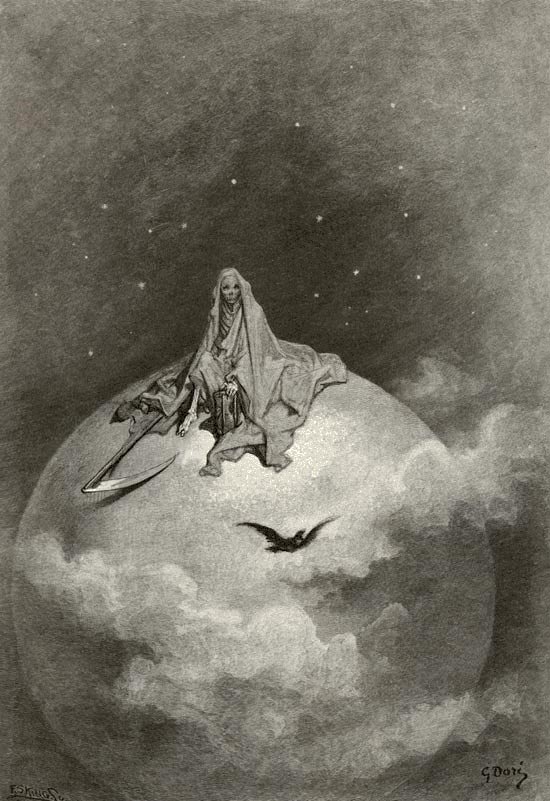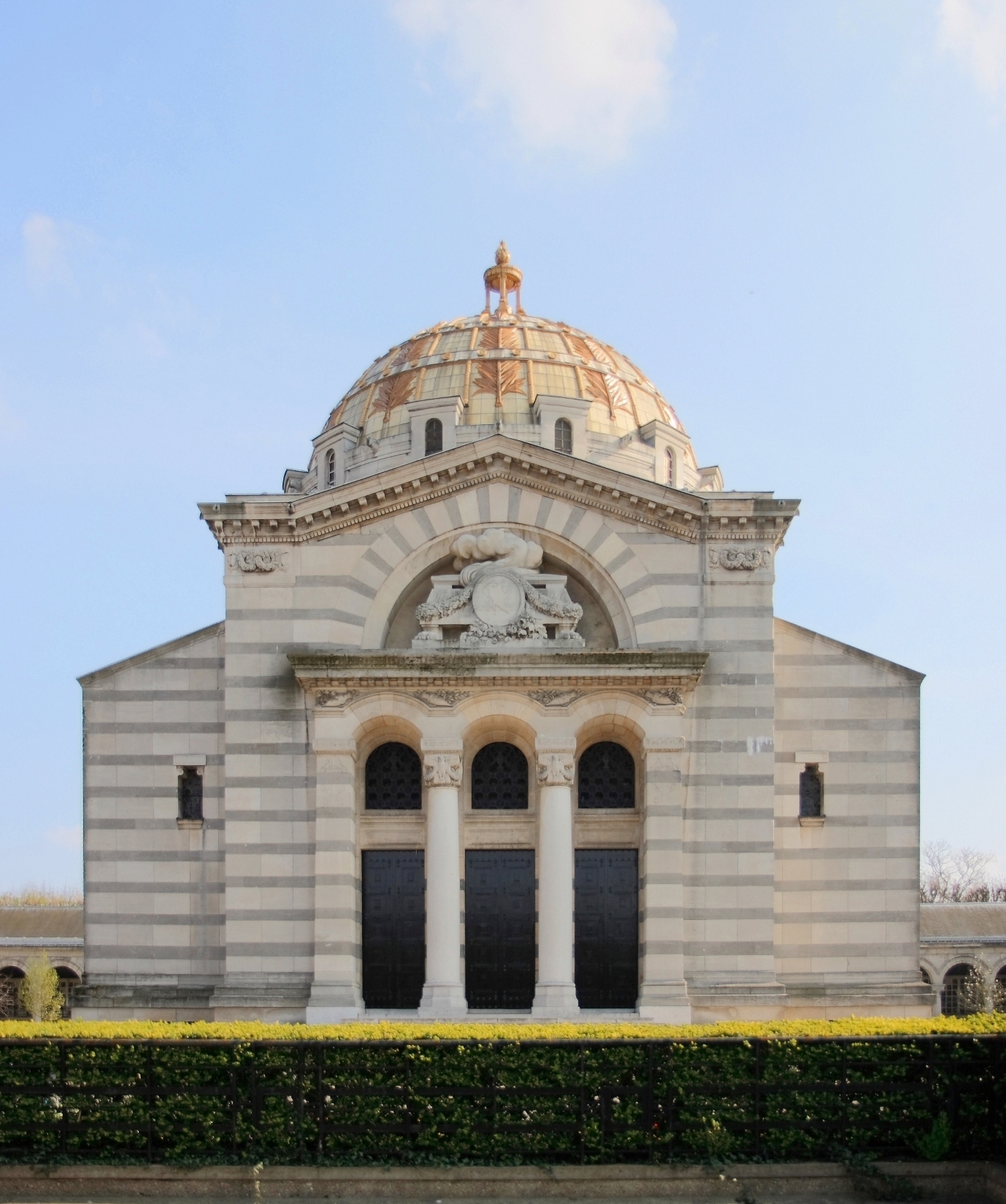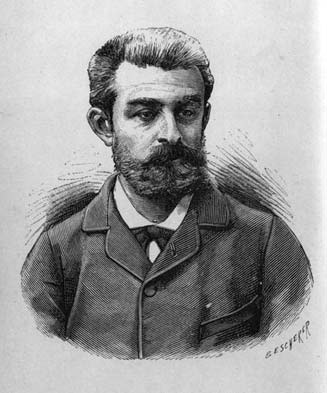|
Villiers De L'Isle-Adam
Jean-Marie-Mathias-Philippe-Auguste, comte de Villiers de l'Isle-Adam (7 November 1838 – 19 August 1889) was a French symbolist writer. His family called him Mathias while his friends called him Villiers; he would also use the name Auguste when publishing some of his books. Life Villiers de l'Isle-Adam was born in Saint-Brieuc, Brittany, to a distinguished aristocratic family. His parents, Marquis Joseph-Toussaint and Marie-Francoise (née Le Nepvou de Carfort) were not financially secure and were supported by Marie's aunt, Mademoiselle de Kerinou. In attempt to gain wealth, Villiers de l'Isle-Adam's father began an obsessive search for the lost treasure of the Knights of Malta, formerly known as the Knights Hospitaller, of which Philippe Villiers de L'Isle-Adam, a family ancestor, was the 16th-century Grand Master of the order. The treasure had reputedly been buried near Quintin during the French Revolution. Consequently, Marquis Joseph-Toussaint spent large sums of money ... [...More Info...] [...Related Items...] OR: [Wikipedia] [Google] [Baidu] |
Saint-Brieuc
Saint-Brieuc (, Breton: ''Sant-Brieg'' , Gallo: ''Saent-Berioec'') is a city in the Côtes-d'Armor department in Brittany in northwestern France. History Saint-Brieuc is named after a Welsh monk Brioc, who Christianised the region in the 6th century and established an oratory there. Bro Sant-Brieg/Pays de Saint-Brieuc, one of the nine traditional bishoprics of Brittany which were used as administrative areas before the French Revolution, was named after Saint-Brieuc. It also dates from the Middle Ages when the "pays de Saint Brieuc," or Penteur, was established by Duke Arthur II of Brittany as one of his eight "battles" or administrative regions. Geography Overview The town is located by the English Channel, on the Bay of Saint-Brieuc. Two rivers flow through Saint-Brieuc: the Goued/Gouët and the Gouedig/ Gouédic. Other towns of notable size in the ''département'' of Côtes d'Armor are Gwengamp/Guingamp, Dinan, and Lannuon/Lannion all ''sous-préfectures''. In 2009, lar ... [...More Info...] [...Related Items...] OR: [Wikipedia] [Google] [Baidu] |
Stéphane Mallarmé
Stéphane Mallarmé ( , ; 18 March 1842 – 9 September 1898), pen name of Étienne Mallarmé, was a French poet and critic. He was a major French symbolist poet, and his work anticipated and inspired several revolutionary artistic schools of the early 20th century, such as Cubism, Futurism, Dadaism, and Surrealism. Biography Mallarmé was born in Paris. He was a boarder at the ''Pensionnat des Frères des écoles chrétiennes à Passy'' between 6 or 9 October 1852 and March 1855. He worked as an English teacher and spent much of his life in relative poverty but was famed for his '' salons'', occasional gatherings of intellectuals at his house on the rue de Rome for discussions of poetry, art and philosophy. The group became known as ''les Mardistes,'' because they met on Tuesdays (in French, ''mardi''), and through it Mallarmé exerted considerable influence on the work of a generation of writers. For many years, those sessions, where Mallarmé held court as judge, jester, ... [...More Info...] [...Related Items...] OR: [Wikipedia] [Google] [Baidu] |
Johann Wolfgang Von Goethe
Johann Wolfgang von Goethe (28 August 1749 – 22 March 1832) was a German poet, playwright, novelist, scientist, statesman, theatre director, and critic. His works include plays, poetry, literature, and aesthetic criticism, as well as treatises on botany, anatomy, and colour. He is widely regarded as the greatest and most influential writer in the German language, his work having a profound and wide-ranging influence on Western literary, political, and philosophical thought from the late 18th century to the present day.. Goethe took up residence in Weimar in November 1775 following the success of his first novel, ''The Sorrows of Young Werther'' (1774). He was ennobled by the Duke of Saxe-Weimar, Karl August, in 1782. Goethe was an early participant in the ''Sturm und Drang'' literary movement. During his first ten years in Weimar, Goethe became a member of the Duke's privy council (1776–1785), sat on the war and highway commissions, oversaw the reopening of silver min ... [...More Info...] [...Related Items...] OR: [Wikipedia] [Google] [Baidu] |
Victor Hugo
Victor-Marie Hugo (; 26 February 1802 – 22 May 1885) was a French Romantic writer and politician. During a literary career that spanned more than sixty years, he wrote in a variety of genres and forms. He is considered to be one of the greatest French writers of all time. His most famous works are the novels ''The Hunchback of Notre-Dame'' (1831) and ''Les Misérables'' (1862). In France, Hugo is renowned for his poetry collections, such as (''The Contemplations'') and (''The Legend of the Ages''). Hugo was at the forefront of the Romanticism, Romantic literary movement with his play ''Cromwell (play), Cromwell'' and drama ''Hernani (drama), Hernani''. Many of his works have inspired music, both during his lifetime and after his death, including the opera ''Rigoletto'' and the musicals ''Les Misérables (musical), Les Misérables'' and ''Notre-Dame de Paris (musical), Notre-Dame de Paris''. He produced more than 4,000 drawings in his lifetime, and campaigned for social cau ... [...More Info...] [...Related Items...] OR: [Wikipedia] [Google] [Baidu] |
Android (robot)
An android is a humanoid robot or other artificial being often made from a flesh-like material. Historically, androids were completely within the domain of science fiction and frequently seen in film and television, but advances in robot technology now allow the design of functional and realistic humanoid robots. Terminology The ''Oxford English Dictionary'' traces the earliest use (as "Androides") to Ephraim Chambers' 1728 '' Cyclopaedia,'' in reference to an automaton that St. Albertus Magnus allegedly created. By the late 1700s, "androides", elaborate mechanical devices resembling humans performing human activities, were displayed in exhibit halls. The term "android" appears in US patents as early as 1863 in reference to miniature human-like toy automatons. The term ''android'' was used in a more modern sense by the French author Auguste Villiers de l'Isle-Adam in his work '' Tomorrow's Eve'' (1886). This story features an artificial humanlike robot named Hadaly. As said by ... [...More Info...] [...Related Items...] OR: [Wikipedia] [Google] [Baidu] |
Jack Sullivan (literary Scholar)
Jack Sullivan (born November 26, 1946) is an American literary scholar, professor, essayist, author, editor, musicologist, concert annotator, and short story writer. He is a scholar of the horror genre, Alfred Hitchcock, and the impact of American culture on European music. Biography Born November 26, 1946, Jack Sullivan obtained a B.A. from Furman University, and his M.A., M. Phil., and Ph.D., from Columbia University, where he studied under Jacques Barzun. A former English professor at NYU and Columbia, Sullivan is currently serving as the Chair of the English Department at Rider University, in Lawerenceville, New Jersey. His literary and music essays and reviews have appeared in ''The New York Times Book Review'', ''The Washington Post Book World'', ''The New Republic'', '' Saturday Review'', ''USA Today'', and ''Harper's Magazine''. His short fiction was published in ''The Kelsey Review'' and ''New Terrors'' (edited by Ramsey Campbell). He and his wife, Robin, have two so ... [...More Info...] [...Related Items...] OR: [Wikipedia] [Google] [Baidu] |
Conte Cruel
The conte cruel is, as ''The A to Z of Fantasy Literature'' by Brian Stableford states, a "short-story genre that takes its name from an 1883 collection by Villiers de l'Isle-Adam", although previous examples had been provided by such writers as Edgar Allan Poe. Some critics use the label to refer only to non-supernatural horror stories, especially those that have nasty climactic twists, but it is applicable to any story whose conclusion exploits the cruel aspects of the 'irony of fate.' The collection from which the short-story genre of the conte cruel takes its name is ''Contes cruels'' (1883, tr. Sardonic Tales, 1927) by Villiers de l'Isle-Adam. Also taking its name from this collection is ''Contes cruels'' ("''Cruel Tales''"), a two-volume set of about 150 tales and short stories by the 19th-century French writer Octave Mirbeau, collected and edited by Pierre Michel and Jean-François Nivet and published in two volumes in 1990 by Librairie Séguier. Some noted writers in the co ... [...More Info...] [...Related Items...] OR: [Wikipedia] [Google] [Baidu] |
Horror Fiction
Horror is a genre of fiction which is intended to frighten, scare, or disgust. Horror is often divided into the sub-genres of psychological horror and supernatural horror, which is in the realm of speculative fiction. Literary historian J. A. Cuddon, in 1984, defined the horror story as "a piece of fiction in prose of variable length... which shocks, or even frightens the reader, or perhaps induces a feeling of repulsion or loathing". Horror intends to create an eerie and frightening atmosphere for the reader. Often the central menace of a work of horror fiction can be interpreted as a metaphor for larger fears of a society. Prevalent elements of the genre include ghosts, demons, vampires, werewolves, ghouls, the Devil, witches, monsters, extraterrestrials, dystopian and post-apocalyptic worlds, serial killers, cannibalism, cults, dark magic, satanism, the macabre, gore and torture. History Before 1000 The horror genre has ancient origins, with roots in folklore ... [...More Info...] [...Related Items...] OR: [Wikipedia] [Google] [Baidu] |
Axël
''Axël'' is a drama by French writer Auguste Villiers de l'Isle-Adam, published in 1890. It was influenced by his participation in the Paris Commune, the Gnostic philosophy of Hegel as well as the works of Goethe and Victor Hugo. It begins in an occult castle. The Byronic hero Axël meets a Germanic princess. After an initial conflict they fall in love. They speak of the amazing journeys they plan to have. But they realize that life will never measure up to their dreams. They then commit suicide. History ''Axël'' was the work Villiers considered his masterpiece, although critical opinion has often been reluctant to agree with him, placing far higher value on his fiction. Villiers began work on the piece around 1869 and had still not put the finishing touches to it when he died. It was first published posthumously in 1890. The play is heavily influenced by the Romantic theatre of Victor Hugo, as well as Goethe's ''Faust'' and the music dramas of Richard Wagner. The last time it wa ... [...More Info...] [...Related Items...] OR: [Wikipedia] [Google] [Baidu] |
Père Lachaise Cemetery
Père Lachaise Cemetery (french: Cimetière du Père-Lachaise ; formerly , "East Cemetery") is the largest cemetery in Paris, France (). With more than 3.5 million visitors annually, it is the most visited necropolis in the world. Notable figures in the arts buried at Père Lachaise include Michel Ney, Frédéric Chopin, Émile Waldteufel, Édith Piaf, Marcel Proust, Georges Méliès, Marcel Marceau, Sarah Bernhardt, Oscar Wilde, Thierry Fortineau, J.R.D. Tata, Jim Morrison and Sir Richard Wallace. The Père Lachaise is located in the 20th arrondissement of Paris, 20th arrondissement and was the first garden cemetery, as well as the first municipal cemetery in Paris. It is also the site of three World War I memorials. The cemetery is located on the Boulevard de Ménilmontant. The Paris Métro station Philippe Auguste (Paris Métro), Philippe Auguste on Paris Métro Line 2, Line 2 is next to the main entrance, while the station Père Lachaise (Paris Métro), Père Lachaise, on both ... [...More Info...] [...Related Items...] OR: [Wikipedia] [Google] [Baidu] |
À Rebours
''À rebours'' (; translated ''Against Nature'' or ''Against the Grain'') is an 1884 novel by the French writer Joris-Karl Huysmans. The narrative centers on a single character: Jean des Esseintes, an eccentric, reclusive, ailing aesthete. The last scion of an aristocratic family, Des Esseintes loathes nineteenth-century bourgeois society and tries to retreat into an ideal artistic world of his own creation. The narrative is almost entirely a catalogue of the neurotic Des Esseintes's aesthetic tastes, musings on literature, painting, and religion, and hyperaesthesic sensory experiences. ''À rebours'' contains many themes that became associated with the Symbolist aesthetic. In doing so, it broke from Naturalism and became the ultimate example of "Decadent" literature, inspiring works such as Oscar Wilde's ''The Picture of Dorian Gray'' (1890). In his preface for the 1903 publication of the novel, Huysmans wrote that he had the idea to portray a man "soaring upwards into dream ... [...More Info...] [...Related Items...] OR: [Wikipedia] [Google] [Baidu] |
Joris-Karl Huysmans
Charles-Marie-Georges Huysmans (, ; 5 February 1848 – 12 May 1907) was a French novelist and art critic who published his works as Joris-Karl Huysmans (, variably abbreviated as J. K. or J.-K.). He is most famous for the novel ''À rebours'' (1884, published in English as ''Against the Grain'' and as ''Against Nature''). He supported himself by way of a 30-year career in the French civil service. Huysmans's work is considered remarkable for its idiosyncratic use of the French language, large vocabulary, descriptions, satirical wit and far-ranging erudition. First considered part of Naturalism, he became associated with the decadent movement with his publication of ''À rebours.'' His work expressed his deep pessimism, which had led him to the philosophy of Arthur Schopenhauer. In later years, his novels reflected his study of Catholicism, religious conversion, and becoming an oblate. He discussed the iconography of Christian architecture at length in '' La cathédral ... [...More Info...] [...Related Items...] OR: [Wikipedia] [Google] [Baidu] |








